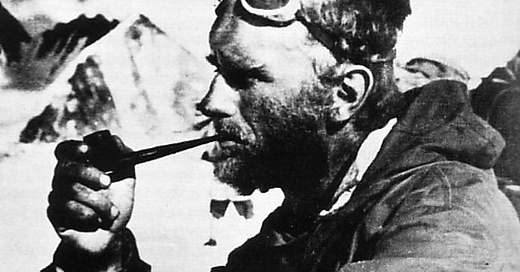Branding Building. World Building.
Beyond selling and the bottom line is the stuff dreams are made of.
A good brand is an ideal, a place where you see yourself as a consumer getting the things that make you your ideal you, the costume of your character. The images and videos that represent this story are the ideal of that reality that people hope to aspire to. The product descriptions and product titles echo something that the zeitgeist is yearning for. The celebrity associations with the brand in the ads, press & social media represent an ideal a consumer might look up to be - like the best tennis player in the world, or the actor in all the adventure movies, or the Instagram tastemaker who attends all the best events. If it’s a heritage brand it’s been doing this for years, and incorporates its legacy into this. If it’s a new brand, it might play up its newness and modernity, “This isn’t your parent’s brand,” this brand was built for your generation. Sometimes, it fits a gap that is emerging, or was always there in the ether that didn’t yet exist.
Around a decade ago, I started a brand called Conrad Men’s, which was a briefcase and bag company built to serve the rugged gentleman. At the time Filson was doing a lot of rebuilding, but always felt like it was made for someone going duck hunting, not an adventurous aristocrat in tweed, stopping their mountain climb for a moment to smoke a pipe and drink some tea. I built Conrad with the elegant, but rugged, feel to it that referenced climbers from the late 1800s - explorers mostly equipped with wool jackets and leather or hemp equipment. I wanted it to feel like it was in an age where there was still some mystery - a time before smart guides to a location with every little turn described, every challenge anticipated and documented. I wanted to harken back to a time when discovery was an adventure into the unknown, not following a map of expected experiences.
I also built it for the hole in the marketplace. There were luxury-branded bags, and there were technical office backpacks, and there were canvas bags for the hunter type. There was no bag in the middle that was slightly expensive and built with the quality to justify the price. There were mostly bags in the $2000+ range, and briefcases in the $300+ range, to which I put Conrad at around $1200 per briefcase, right around the range of an entry-level watch. It came in a beautiful box with the image of a mountain in Nepal with a single hiker as a tiny figure in the foreground, open to the sense of awe before him. This would imply that as the box was opened, the purchaser was about to embark on an adventure with this bag - Ethan Hunt’s mission, if he chose to accept it.
Ralph Lauren has always done a great job of world-building: from the print campaigns, to the runway shows, to the stores, to his actual life and homes being the representation of the myth he built - part Gatsby, part Sundance Kid.
I also think a lot of brands have lost the magic of world/brand building with the need for the bottom line. I walk into too many stores with no soul, with laminate fixtures and bad lighting, with minimum wage employees who are just punching in at the factory for the day. Back in the 1990s, I remember going into a simple store like The Gap and the employees were excited to be there, the customer was excited to be there, and everyone was excited about just plain white tees and khaki pants. Brooks Brothers has suffered from this, being reduced mostly to the rows of outlet malls, with discount bins, plastic “wood” floors buckling underfoot, and employees who are just collecting a paycheck, not selling the dream. The tide is turning, as they are also rebuilding under the creative direction of Michael Bastian, and opening up new stores, including the flagship in New York City. Their new ads talk to the heritage of the brand as a generational tradition, with fathers and sons getting suits together. They are telling stories again, not just selling products.
We have clients creating brand worlds too, most notably Seymoure Gloves, which harkens back to the long-glove glam of old Hollywood and the fingerless leather gloves from the punk age of 1980s NYC. Their gloves can currently be seen on Beyoncé for her Cowboy Carter tour. They have stunning imagery and brand direction, and they create a reality you want to be a part of, and are on the stars you look up to and aspire to be. They are creating a legacy brand in real-time.




